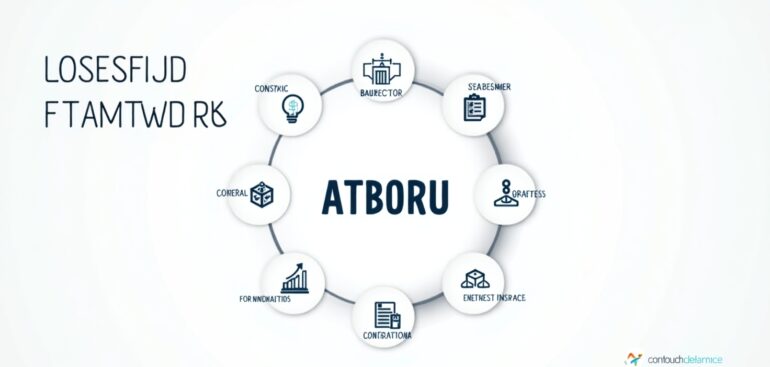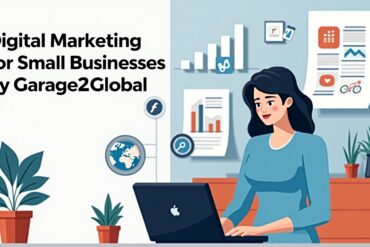Contents
- ATFBORU: The Ultimate Guide to the Strategic Innovation Framework
- What is ATFBORU?
- ATFBORU-The Starting Journey
- Origins and Purpose of ATFBORU
- What Is the ATFBORU Framework?
- ATFBORU model vs Other Strategic Models
- Why Is ATFBORU so Famous?
- Why ATFBORU is Better Than Other Platforms?
- Features and benefits of ATFBORU
- Key Features
- Core Benefits
- How Does ATFBORU Work?
- Real-World Experience with ATFBORU
- Business Use Cases and Driving Innovation with ATFBORU
- How to Implement ATFBORU in Your Business
- Tips for New Users
- Who Can Benefit from ATFBORU?
- Customer Reviews of the ATFBORU Framework
- Frequently Asked Questions (FAQs)
- Is ATFBORU hard to implement?
- How does ATFBORU differ from the usual business plan?
- Can I apply the ATFBORU to personal projects?
- What is the most important stage in the ATFBORU framework?
- How long does a single ATFBORU iteration last?
- Can the stages of ATFBORU overlap?
- Where can one learn more about ATFBORU?
- Conclusion
ATFBORU: The Ultimate Guide to the Strategic Innovation Framework
In this fast-moving commercial setting, companies seek the edge. Needless to say, they need a clear blueprint for achieving the process of innovation. The ATFBORU framework completely serves this purpose. It is at once precise enough to lend order to the processes of growth and flexible enough to allow for market vicissitudes.
A common complaint of businesses: even when vast potential ideas are conceived, they yet never come into being through implementation. Here comes the ATFBORU model as the impetus for an accelerating change.
This book covers practically everything about the ATFBORU framework. You will learn what it is and get some background information on its origins. We will discuss its features, benefits, and potential applications. By the book’s end, you will be well-versed enough to apply this strategic model in the execution stage of your own projects and obtain significant results.
What is ATFBORU?
ATFBORU is a seven-stage strategic framework for continuous innovation and development within a business. It guides a project from the initial idea to implementation and review in its entirety. This is unlike rigid, linear models where ATFBORU shows itself to be a cyclical one.
It encourages continuous learning and adaptation, which in itself makes it an apt weapon for any company wishing to stay ahead of competition. ATFBORU helps the teams remain focused and clear so that every action undertaken is in line with the company’s strategic objectives. Individual projects or collections of strategies within this model are often called atfboru.
ATFBORU-The Starting Journey
Knowing the history of a framework allows us to cherish its purpose. The ATFBORU journey is basically about the need for a more holistic business strategy.
Origins and Purpose of ATFBORU
ATFBORU was developed by a consortium of business strategists and innovation consultants at the dawn of the 2020. Companies seemed to be grappling with problems wrought by executive disconnect, with strategy at a high level, implementation at a more gritty one.
Great ideas would die a slow death as a result of improper planning or mere disregard of the intended procedure.
Hence ATFBORU wanted to fill this gap. The designers intended to create a model both comprehensive and simple to understand. It offers a common language across departments from marketing to product development.
This integrated approach makes sure everyone is working towards the same goals set forth for innovation. In essence, developing processes that make innovation a predictable activity as opposed to something struck by fortune.
What Is the ATFBORU Framework?
The real power of this framework lies in the seven stages that are distinct yet interrelated, with each stage further strengthening the cycle of strategic development.
Analyze: At this first stage, information is collected. Market research and competitor analysis are done. A SWOT analysis (Strengths, Weaknesses, Opportunities, Threats) is performed to understand the situation they are placed in. Decision-making will be based on facts rather than on assumptions.
Target: Having low level of analysis, the next real step is to set specific, measurable, achievable, relevant, and time-bound (SMART) objectives. The targets would be based on Key Performance Indicators (KPIs) to measure the achievement. It answers the question: “What does success look like?”
Formulate: This phase is where the entire brainstorm and strategizing for achieving the set Target take place. Ideas are generated with KPIs, and possibly techniques like mind mapping or design thinking are used. The output will be a workable strategic solution to be implemented.
Build: In other words, an execution of the programs that have been chosen during the last stage. When it’s just a new product, the prototype or the Minimum Viable Product (MVP) is built here. And when this is the case of a marketing campaign, creating of the assets, and the launch of the campaign happens during this stage as well.
Optimize: Yet, optimization is not done after building. Gathering user feedback, carrying out A/B tests, and analyzing the performance data are some of the activities performed among others. Due to these, iterative fine-tuning would be made to further improve the results.
Review: This is essentially the stage where results are compared against specific KPIs set at the Targets stage–and the question is asked, “Did the project meet its targets?”; to explore what worked well and what went less well. Lessons learned from this form of reflection are critical for communication and evaluation.
Unify: Having standardized the procedure for the new innovation, the very last stage is, inner-koordinacyjne, to embed the successful strategy throughout the company and to share the lessons learned as well. This will ensure that the innovation will be instilled deep into the core business for good.
ATFBORU model vs Other Strategic Models
There are many strategic models employed in today’s business world. ATFBORU framework is quite comprehensive in nature alongside its cyclicity. To look at other popular models, we can just contrast them.
| Model | Primary Focus | Best For |
| ATFBORU | Full lifecycle innovation (idea to integration) | Businesses seeking a structured yet adaptive process for continuous improvement. |
| SWOT Analysis | Situational assessment (internal & external factors) | Initial strategic planning and understanding a company’s market position. |
| Agile | Iterative development and flexibility | Software development and projects where requirements change frequently. |
Why Is ATFBORU so Famous?
Its usefulness and real-life applicability make ATFBORU famous. Those companies adopting it enjoy more clarity and higher alignment among their teams. With its stepwise approach, the framework removes the mystery from innovation. It then becomes a feasible goal for companies of all sizes.
It is holistic, from analysis to company-wide alignment to ensure projects do not just get off to a quick start but lay down the foundation of lasting value. In short, its comprehensive approach is one big reason that makes it quite popular with the business community.
Why ATFBORU is Better Than Other Platforms?
Whenever a strategic model is being considered, often the companies land to look for a “platform” for their ideas. The rigidity of many models loses in front of the flexibility of ATFBORU as it is a framework instead of a straitjacket.
It is supposed to serve as a broad skeleton within which each stage can allow some creativity or adaptation. The other models can be too theoretical or too focused in scope. For instance, SWOT is great for analysis but would not take you through actual implementation.
Agile is great at building but it does not prescribe how to strategize before you begin. Hence, ATFBORU is good because it covers the whole journey enabling you to never miss a critical step.
Features and benefits of ATFBORU
Some features of the ATFBORU model would help in better understanding of its benefits.
Key Features
- Seven-Stage Process: Provides concrete facts in a logical order from idea to integration.
- Data-Driven: Heavy focus on research and analysis in the initial stage.
- Iterative Cycle: The Optimize and Review stages give way for continual improvements.
- Goal Oriented: Target stage is to ensure all efforts are targeted against specific KPIs.
- Holistic Scope: Links a broad-ranging strategy with pragmatic execution.
Core Benefits
- Increased Clarity: Everybody in the team is aware of the goals and the plan.
- Reduced Risk: Decisions based on data will limit the chances of expensive mistakes.
- Fostering of Innovation: The structured process promotes the culture of creative problem solving.
- Better Alignment: Departments join the forces and work towards realization of common sway.
- Sustained Growth: The company unites and executes for successful strategies with long-term impact.
How Does ATFBORU Work?
A simple scenario will help in understanding the way ATFBORU works.
A Basic Example: “City Brews” Coffee Shop
The city-owned coffee shop, “City Brews”, wanted to increase customer loyalty through a new mobile app.
1. Analyze: Surveying customers, it finds out that they want to order ahead and earn rewards. They analyzed competitor apps.
2. Target: Their target is set at 500 downloads and 1,000 mobile orders within the first three months.
3. Formulate: They decide to keep the app in its simplest form, with an order ahead feature and a digital stamp card of “buy 10 coffees, get 1 free.”
4. Build: They hire the developer for whom they built an MVP of the app.
5. Optimize: Post-launch, they notice that users never use the rewards. Hence, a notification is set up to remind users about their stamp progress.
6. Review: In three months, downloads and orders had gone up to 650 and 1,200, respectively, and they met their goals.
7. Unify: Now the app is fully embedded in marketing activities, promotion in the stores, and on all social media.
Real-World Experience with ATFBORU
While working as a business consultant, I implemented the ATFBORU framework alongside one mid-size e-commerce client. This company was struggling with launching new lines of products. The ideas were good, flawed only by chaotic execution. Using ATFBORU, we first sifted through their customer data to identify a promising niche area. We then set a clear sales target for a new product. The marketing team then went on to formulate the marketing plan, build the product page, and launch.
The Optimize stage was a game-changer. Based on customer feedback, they modified the product description and ad creative, increasing conversion rates by 15%. At the end of the quarter, the Review stage showed the launch was a great success. The Unify stage consisted of creating a new launch playbook for the company that was based on our process. Now, the client uses the ATFBORU model for all new launches.
Business Use Cases and Driving Innovation with ATFBORU
The ATFBORU framework is generally versatile. Its implications are held to reconsider innovation in all spheres of business.
Product Development: Develop a product from market research through to its launch.
Marketing Campaigns: Build the campaign from its audience to its performance review.
Market Entry Strategy: Plan the company entering a new geographical market.
Process Improvement: Revamp an internal process to increase efficiency.
How to Implement ATFBORU in Your Business
The implementation of the ATFBORU framework requires commitment, yet the framework may be implemented in stages described below.
Educate Your Team: Make sure everyone understands all seven stages of the framework and the purpose of the framework.
Choose One Pilot Project: For a single, clearly defined project, try it out.
Clearly Define Roles: Choose a project leader, and ensure every team member is clear on their roles in all phases.
Use Collaboration Tools: Use project management software to keep track of progress as the team moves through each of the seven stages.
Live the Cycle: Treat every iteration as a learning loop. Act on the knowledge gathered during the Review stage to support the next project.
Tips for New Users
Remember these tips if you are new to the ATFBORU model.
Each stage is Important: Do not allow rushing through an Analyze or Formulate stage, as this will cause problems later on.
Data Should Inform, Not Paralyze: Use data as your guide to make decisions but don’t keep getting stuck in the analysis and never moving forward.
Take Time to Celebrate Small Wins: Take note of accomplishments at the completion of each stage to keep your team motivated.
Communication is Important throughout the whole process between any member of the team.
Who Can Benefit from ATFBORU?
Almost every professional or organization could gain benefits through the implementation of the ATFBORU framework.
Startups and Entrepreneurs: It helps provide some structure to launching a new business or product.
Marketing Teams: Helps in identifying and evaluating effective, measureable campaigns.
Product Managers: Provides a clear lifecycle management process for new and existing products.
Established Corporations: Helps large companies build cultures of agility and innovation.
Non-Profit Organizations: Can be used to structure fundraising campaigns or new community programs.
Customer Reviews of the ATFBORU Framework
The feedback from businesses that have adopted the ATFBORU model is overwhelmingly positive.
“The ATFBORU framework brought discipline to our creative process. Our product launches are now smoother and more successful.” – Jane D., CEO, TechStart Inc
“As a marketing manager, I love the Target and Review stages. They provide clear metrics for success and make it easy to justify our budget.” – Mark C., Marketing Director
“Using ATFBORU, we redesigned the customer service workflow and increased our efficiency of 30% in just one quarter.” – Sarah P., Operations Lead
Frequently Asked Questions (FAQs)
-
Is ATFBORU hard to implement?
No. While discipline is required, the systematic, logical, step-by-step approach is easy to follow. The best way to learn the process is to start with a small pilot project.
-
How does ATFBORU differ from the usual business plan?
A business plan is usually a fixed document. ATFBORU is a dynamic and cyclical framework built toward perpetual action, optimization, and review.
-
Can I apply the ATFBORU to personal projects?
Definitely! Use the seven stages to work on a personal goal, like starting a blog or learning something new.
-
What is the most important stage in the ATFBORU framework?
All stages are important; however, the Analyze and Target stages form the foundation. Set those right and the whole project gets set up for success.
-
How long does a single ATFBORU iteration last?
For instance, it might take anywhere from a few weeks for some small marketing campaigns to working on a new software product for a few months. Depending on the scope of the project, the length is rationally variable.
-
Can the stages of ATFBORU overlap?
Yes. Overlapping can happen. For example, you may collect some initial feedback (Optimize) while still working on the Build stage of your MVP development.
-
Where can one learn more about ATFBORU?
More resources and relevant cases can be found on business strategy blogs and innovation-focused publications, typically discussing integrated strategic frameworks.
Conclusion
In competitive market environments, the other way on the fourth stage can securely exist. The ATFBORU provides any organization with a powerful road map to achieving innovation and sustainable growth.
Surely, there is nothing that will bring confidence to your organization like moving alongside the ATFBORU. It is more than a simple step-by-step process, it is a new way of thinking.



